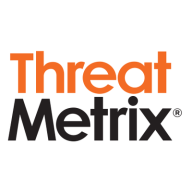

ThreatMetrix and IdentityMind compete in the digital identity solutions space. IdentityMind has an edge in features, while ThreatMetrix is preferred for ease of deployment and support, appealing to those seeking quick setup and responsive service.
Features: ThreatMetrix includes robust fraud prevention tools, real-time risk assessments, and broad platform integration. IdentityMind offers advanced identity verification, compliance management, and customizable reporting, catering to complex security and regulatory needs.
Ease of Deployment and Customer Service: ThreatMetrix offers a streamlined deployment process with excellent support, ensuring smooth integration. IdentityMind's deployment is more detailed and requires configuration. Despite this, ThreatMetrix's ease of implementation and quality support are generally preferred.
Pricing and ROI: ThreatMetrix usually involves lower setup costs, providing a balanced return for businesses seeking cost-effective solutions. IdentityMind demands a higher initial investment but delivers high returns with its extensive feature set, especially for firms needing detailed compliance and identity management. The pricing difference reflects the choice between immediate affordability and long-term value.
| Product | Market Share (%) |
|---|---|
| ThreatMetrix | 10.9% |
| IdentityMind | 0.2% |
| Other | 88.9% |

| Company Size | Count |
|---|---|
| Small Business | 3 |
| Large Enterprise | 4 |
The balance between best experience and least fraud is tough to find. Too much risk means fraud and chargebacks that can hurt your bottomline. Too much security means fewer customers and more unhappy customers. What’s the balance for the best online fraud detection? Knowing who’s on the other end of the transaction is the best start, and IdentityMind helps you get there.
IdentityMind lets you see who’s on the other end of the transaction so you can identify the good guys you want to do business with and the bad guys that you want to avoid. And, using digital identities powered by eDNA™ technology, you can get a more accurate picture of risk to enable better customer selection and fewer rejections of good customers. eDNA leverages machine learning to build trusted digital identities and analyze identities for the most accurate reputation score (risk profile) possible. Our algorithms provide reputations for each entity tailored for the industry in which you do business. And, we enable you to modify your risk process on the fly, adding in additional checks where merited.
ThreatMetrix is a robust fraud prevention solution, enhancing fraud assessments through a vast database of malicious IP addresses and device fingerprints. Its easy integration and real-time analytics offer valuable insights, making it ideal for assessing transaction risks and maintaining device identity integrity.
ThreatMetrix provides a user-friendly interface for transaction analysis, featuring customizable rules and reports to monitor suspicious activities. Its device profiling and real-time analytics deliver comprehensive insights into login attempts and activities, contributing to effective fraud detection and risk management. Users benefit from simple integration and scalability, supported by dependable technical support and proactive updates. While effective, enhancements are needed in SDK integration complexity, real-time processing, and case management automation. An outdated interface, high pricing, limited data storage, and the need for better data field collaboration also present challenges. More intuitive rule engines and comprehensive threat detection features would improve the user experience.
What are ThreatMetrix's most important features?ThreatMetrix is implemented across industries like retail, banking, and digital services for fraud detection, device intelligence, and maintaining device identity integrity. Organizations employ it to detect unauthorized mobile access, identify credit card fraud, and prevent identity theft. Integrated through an SDK with backend API management, it enables device checks, transaction risk assessment, and access control management.
We monitor all Fraud Detection and Prevention reviews to prevent fraudulent reviews and keep review quality high. We do not post reviews by company employees or direct competitors. We validate each review for authenticity via cross-reference with LinkedIn, and personal follow-up with the reviewer when necessary.